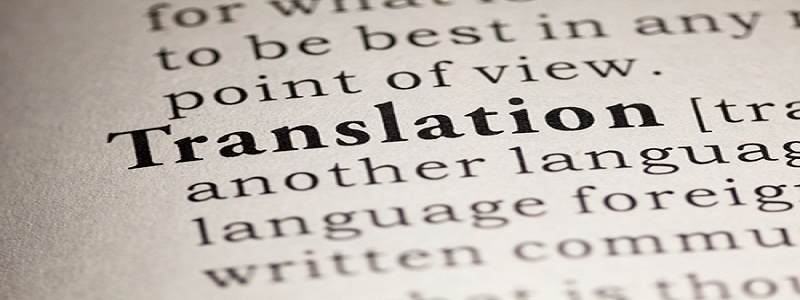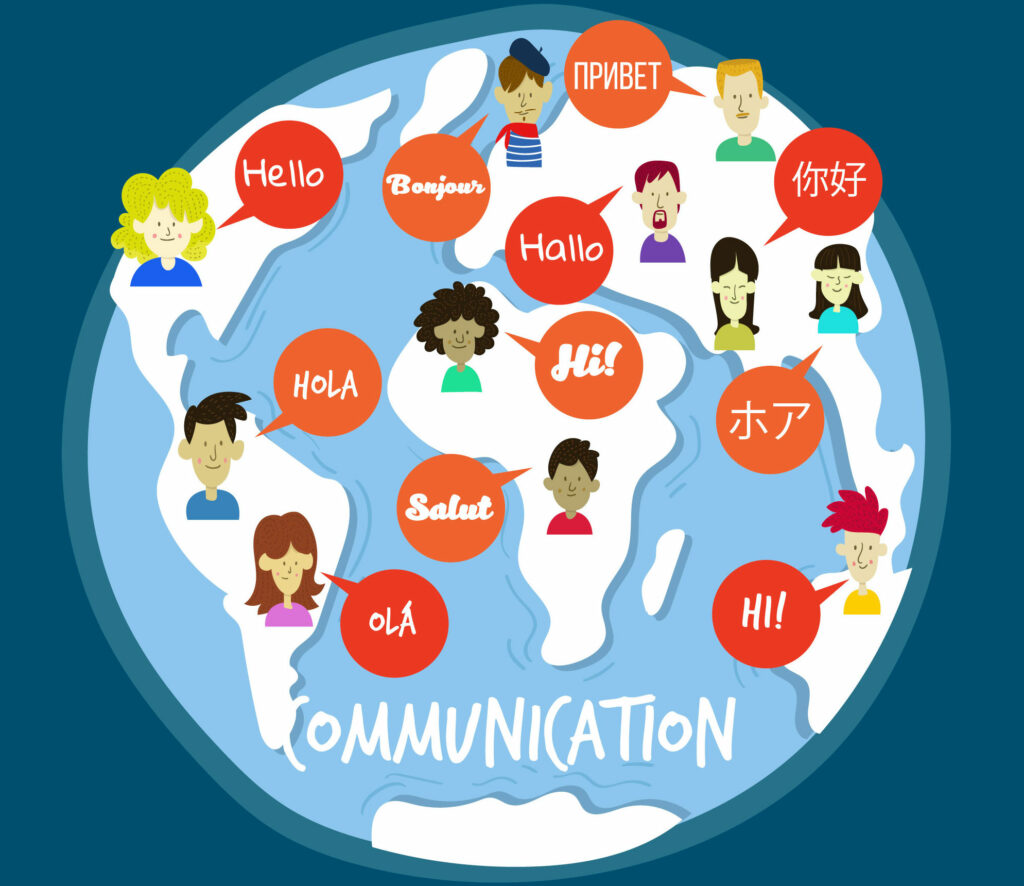
Need translation rules for translators and interpreters? We are here to give you some fantastic language translation rules, so you can expand your reach and increase your content.
The global market has opened up and expanded its reach to include everyone on the planet, thereby increasing the number of target audiences at the same time. However, one big barrier to this is language.
Not all native people (aged, children, underprivileged, etc.) learn new languages; they require content in their home language or native language. Hence, translation and interpretation play an important role here.
If your content is in a language other than English, such as Hindi, the reach of your target audience will be limited. You will need to give your visitors the option of a localized experience, and for that, you require translation.
If your content is available in every native language, your reach will be much greater, and your response rate will be higher. The issue is that translating text from one language to another is not an easy task. Sometimes it creates inaccuracies, and the main idea or gist of the matter is lost in translation (literally!). These inaccuracies can be prevented by using some basic rules.
Translators and Interpreters: An Overview
Before jumping directly to the rules for translators and interpreters, let’s briefly discuss who translators and interpreters are.
Professionals who convert (translate) subject matter from one language to another are translators and interpreters. Both a translator and an interpreter perform the same function of communicating from one language to another, but they are not the same.
A translator is someone who translates written content into another language, whereas an interpreter is someone who translates verbal language orally.
Role of Translators and Interpreters
- Translators and interpreters play an essential role in assisting cross-cultural communication, enhancing the level of communication. They serve as a bridge between different languages and local language speakers.
- Translators and interpreters understand the nuances of the language and use their creative writing skills to bring the content to life, engaging more audiences.
- Translators and interpreters ensure that the original meaning and tone are conveyed in the translated texts.
- They gradually overcome the communication gap issues individually as well as globally.
- Interpreters and translators tend to render the message accurately; they focus on meaning rather than words.
10 Important Translation Rules For Translators and Interpreters: An Overview
1. The translation should be brief
When translating something, keep in mind the basic rule of whatever you translate should be brief. It should be both readable and understandable to the readers. They should also not have the impression that they are reading something unusual or that it is not the original text.
As we all know, scientific principles are the same everywhere; for example, Newton’s first law is the same in India as it is in Germany. So, whenever you are translating or interpreting something, remember not to alter the main gist of the content and keep it brief.
2. Use proper grammatical formats
Every language has its own grammatical rules, like Hindi Vyakaran, English grammar, etc.
While translating Hindi to English or English to Hindi or any other language, you should remember to follow the proper grammar rules of the translated language.
3. Stick to the gist of the content
Another translation guideline for interpreters is to stick to the gist of the content. Sometimes, you translate something, and the main concept fades after translating it. To avoid this, try to understand the first gist and then translate the content so that it does not interfere with the original content. After that, your content will reach its intended audience and gain more viewers.
4. Go for proper meaning instead of a word-to-word translation

Most of the words in a language have equivalent words with the same meaning in different languages. Some words can be translated and fit into the sentence, but not all of them might fit in. Hence, remember that the translation should not necessarily be verbatim but should mainly depict the intended meaning of the source language.
5. Clarity of certain dates and places
When translating, keep the event’s dates and location in mind. This will keep the events clear and your accurate. One can learn more about a place or a person by providing accurate dates, locations, and names.
For example, holy books are written in their native languages, but they are now available with significant dates and names in most languages. This preserves the dignity of these books while also providing knowledge to all.
6. Use a more active voice
Rather than using a passive voice, try to keep your content tone active. It becomes simpler and more understandable to the user when using active voice. It is also easier to translate in an active voice and creates direct results prominently.
Suppose a person is new to the country and wants to know about the country, places to visit, important events, etc. But your translation is in the passive voice. This will only confuse the person, and they may make wrong judgments. Hence, It’s better to keep sentences simple and direct to ensure the true meaning and follow language translation rules.
7. Avoid humor
We cannot translate humor correctly because certain expressions are usually not accepted or appreciated after translation. One basic translation guideline for interpreters is to avoid humor. Sometimes things which are funnier to others are serious. By obeying their sentiments, you give them the best translation.
8. The translation should be accurate
This is one of the most critical translation rules for interpreters. Try to translate material with utmost accuracy, but translation can never be 100% accurate. By doing so, your target audience will have more faith in your content.
9. Try to connect with the audience through translation
When you’re translating something, try to think from the point of view of your target audience, their culture, habits, etc. This will help you connect to your audience through translation. The proper words is the crucial link between GenZ and their grandparents.
10. Quality over quantity
Everyone loves quality over quantity. The target audience needs quality content that can be used significantly. By providing quality content, you’re building rapport with your customers and increasing your goodwill and your content.
Importance of Content Translation Today
Translation enables people all over the world to communicate effectively. It is a knowledge courier, a guardian of cultural heritage, and essential to developing a global economy.
Through translation, you can ensure that all of your information and data are conveyed in the same way as the original documents’ essence. There will be no linguistic errors, and everything will be accurately conveyed.
Conclusion

We’ve come a long way by learning some fundamental language translation rules for translators and interpreters. Some of these rules for translators and interpreters are: content should be brief, to the point, and accurate. To provide reliable information, it should retain the gist of the content after translation.
These guidelines for interpreters will undoubtedly be of great assistance in reaching your target audience and increasing the number of audience members.
FAQs
1. What is translating one language to another?
Translating one language to another means writing the same content or matter with the same meaning in a different language. People who don’t know any language other than their native language can also read this content through translated material.
2. What is content translation?
Converting your content to a new audience in another language via translators and interpreters is referred to as content translation.
3. What are the rules we should keep in mind while doing the translation?
1. The translation should be short and brief
2. It should be to the point rather than complex
3. It should give the reader a clear understanding.
4. Describe some qualities of a good translator.
1. A translator should be a linguistic expert.
2. They should have an excellent command of multiple languages
3. They must have extensive knowledge of the subject matter
4. They should possess excellent time management skills and many other qualities.
5. Why is translation necessary in communication?
The translation is required for the global spread of new information, skills, knowledge, concepts, etc. We can communicate with people worldwide, become more comfortable, and quickly explain our ideas through

 Afrikaans
Afrikaans Albanian
Albanian Amharic
Amharic Arabic
Arabic Armenian
Armenian Azerbaijani
Azerbaijani Basque
Basque Belarusian
Belarusian Bengali
Bengali Bosnian
Bosnian Bulgarian
Bulgarian Catalan
Catalan Cebuano
Cebuano Chichewa
Chichewa Chinese (Simplified)
Chinese (Simplified) Chinese (Traditional)
Chinese (Traditional) Corsican
Corsican Croatian
Croatian Czech
Czech Danish
Danish Dutch
Dutch English
English Esperanto
Esperanto Estonian
Estonian Filipino
Filipino Finnish
Finnish French
French Frisian
Frisian Galician
Galician Georgian
Georgian German
German Greek
Greek Gujarati
Gujarati Haitian Creole
Haitian Creole Hausa
Hausa Hawaiian
Hawaiian Hebrew
Hebrew Hindi
Hindi Hmong
Hmong Hungarian
Hungarian Icelandic
Icelandic Igbo
Igbo Indonesian
Indonesian Irish
Irish Italian
Italian Japanese
Japanese Javanese
Javanese Kannada
Kannada Kazakh
Kazakh Khmer
Khmer Korean
Korean Kurdish (Kurmanji)
Kurdish (Kurmanji) Kyrgyz
Kyrgyz Lao
Lao Latin
Latin Latvian
Latvian Lithuanian
Lithuanian Luxembourgish
Luxembourgish Macedonian
Macedonian Malagasy
Malagasy Malay
Malay Malayalam
Malayalam Maltese
Maltese Maori
Maori Marathi
Marathi Mongolian
Mongolian Myanmar (Burmese)
Myanmar (Burmese) Nepali
Nepali Norwegian
Norwegian Pashto
Pashto Persian
Persian Portuguese
Portuguese Punjabi
Punjabi Romanian
Romanian Russian
Russian Polish
Polish Samoan
Samoan Scottish Gaelic
Scottish Gaelic Serbian
Serbian Sesotho
Sesotho Shona
Shona Sindhi
Sindhi Sinhala
Sinhala Slovak
Slovak Slovenian
Slovenian Somali
Somali Spanish
Spanish Sundanese
Sundanese Swahili
Swahili Swedish
Swedish Tamil
Tamil Tajik
Tajik Telugu
Telugu Turkish
Turkish Ukrainian
Ukrainian Urdu
Urdu Uzbek
Uzbek Thai
Thai Vietnamese
Vietnamese Welsh
Welsh Xhosa
Xhosa Yiddish
Yiddish Yoruba
Yoruba Zulu
Zulu